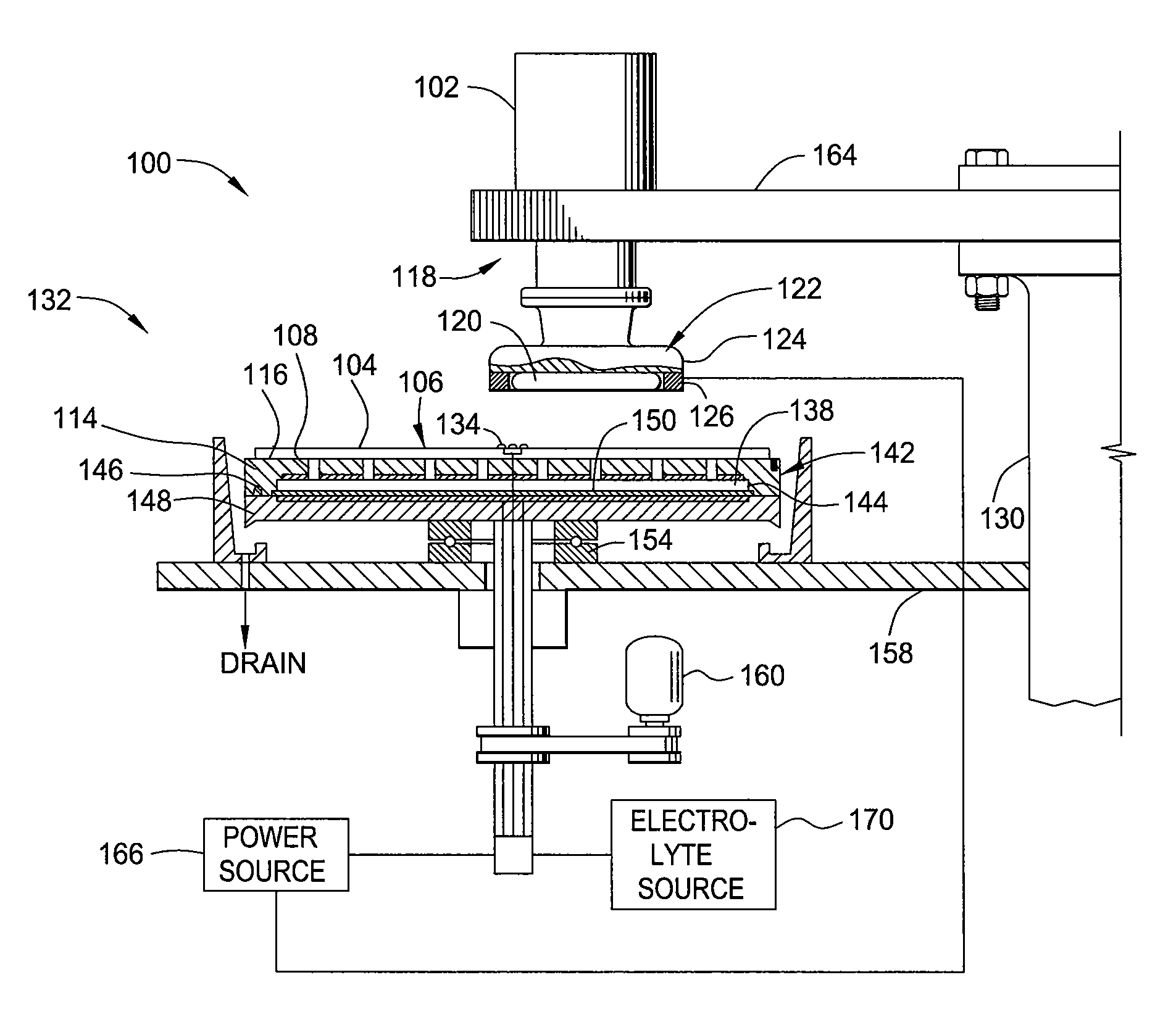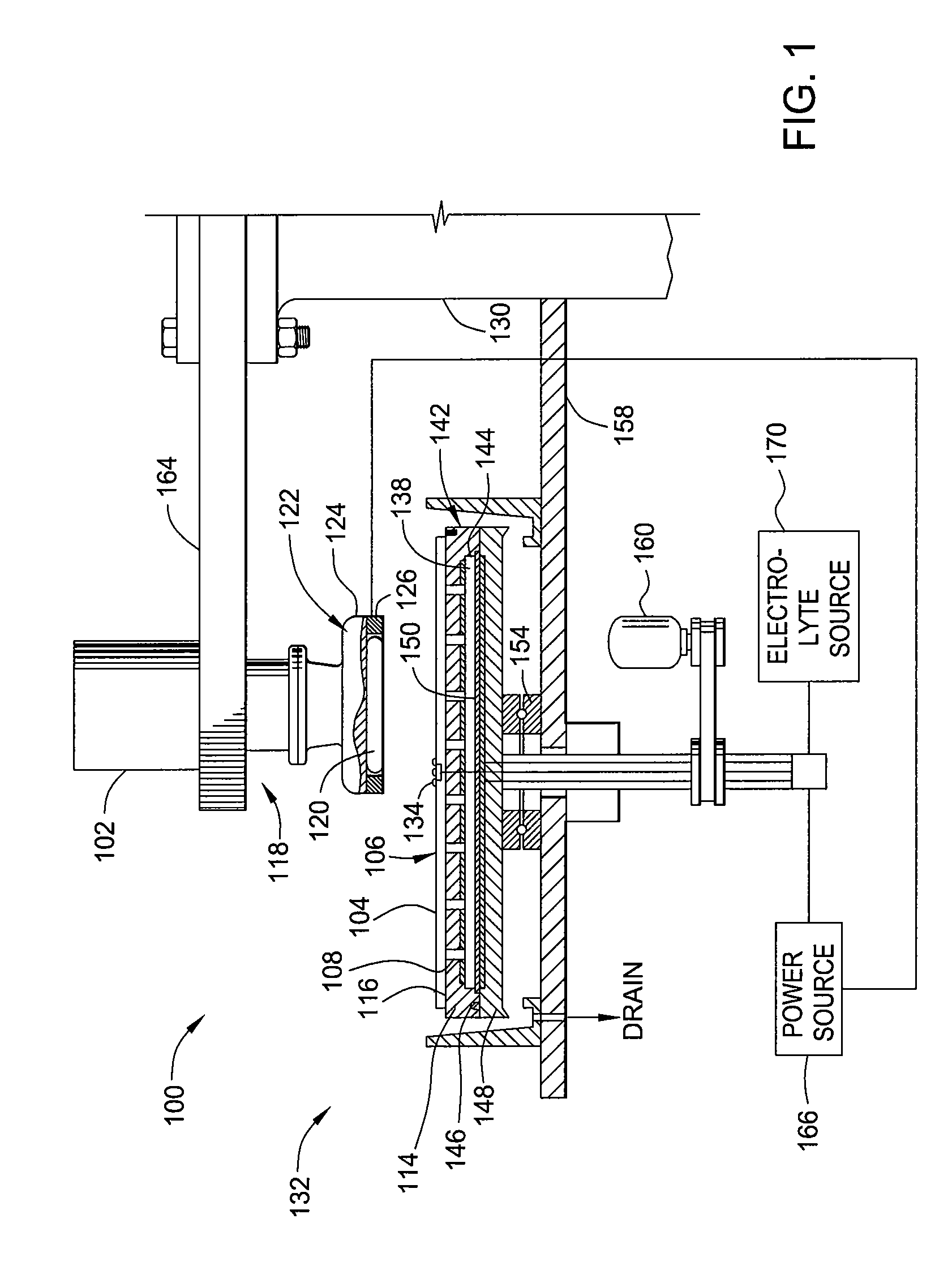Edge bead removal process with ecmp technology
a technology of ecmp and conductive layer, which is applied in the direction of manufacturing tools, electric circuits, electric circuits, etc., can solve the problems of short circuit, delamination of copper layer, other problems, and achieve the effect of only removing excess copper
- Summary
- Abstract
- Description
- Claims
- Application Information
AI Technical Summary
Benefits of technology
Problems solved by technology
Method used
Image
Examples
Embodiment Construction
[0018]Embodiments of the invention as recited in the claims generally relate to edge bead removal (EBR) from a substrate during an electropolishing process. The edge bead removal may occur simultaneously during electrochemical mechanical polishing (Ecmp) of the surface of the substrate.
[0019]As used herein, the term “electrochemical mechanical polishing” (Ecmp) generally refers to planarizing a substrate by the application of electrochemical activity, mechanical activity, abrading, and chemical activity to remove material from a substrate surface.
[0020]As used herein, the term “electro polishing” generally refers to planarizing a substrate by the application of electrochemical activity without abrasion between the surface to be planarized and the polishing pad.
[0021]As used herein, the term “substrate” generally refers to any substrate or material surface formed on a substrate upon which film processing is performed, such as silicon wafers used in semiconductor processing. For examp...
PUM
| Property | Measurement | Unit |
|---|---|---|
| voltage | aaaaa | aaaaa |
| voltage | aaaaa | aaaaa |
| voltage | aaaaa | aaaaa |
Abstract
Description
Claims
Application Information
 Login to View More
Login to View More - R&D
- Intellectual Property
- Life Sciences
- Materials
- Tech Scout
- Unparalleled Data Quality
- Higher Quality Content
- 60% Fewer Hallucinations
Browse by: Latest US Patents, China's latest patents, Technical Efficacy Thesaurus, Application Domain, Technology Topic, Popular Technical Reports.
© 2025 PatSnap. All rights reserved.Legal|Privacy policy|Modern Slavery Act Transparency Statement|Sitemap|About US| Contact US: help@patsnap.com



